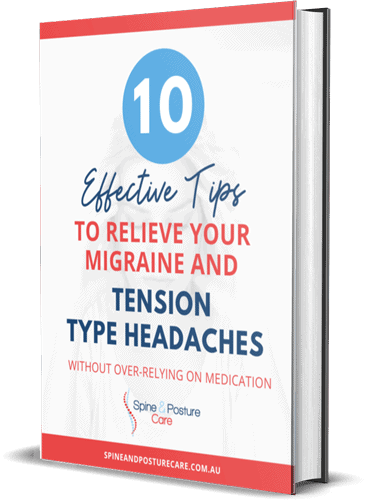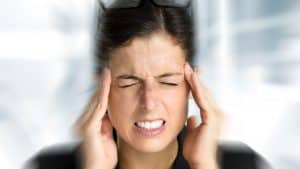The sharp, throbbing ache you feel in your head…
The one that stops you from focusing, the one that keeps you up at night.
That’s your body telling you “you have a migraine”…or is it a headache.
Knowing the difference between headache and migraine is crucial because it changes what you can do to reduce or even get rid of the problem.
So What’s The Difference Between Headache And Migraine?
A migraine is actually a specific type of headache!
The three most common types of headaches are:
– Migraine
– Tension-type headache
– Cervicogenic headache (headaches coming from the neck)
Do You Have A Migraine?
Now you know what a migraine is how do you know if you have common migraine symptoms?
– Does your headache last 4-72 hours?
– Is it one sided and pulsating?
– Is it severe enough to stop you from working
– Does it cause you to feel sick or vomit
– Does it increase your sensitivity to sound or light
If you answered yes to these questions its likely you have a migraine.
In fact – If you have a family history of migraines there’s a 7/10 chance1 you’ll suffer from them too.
The good news is, if it’s correctly diagnosed, the underlying migraine causes can be identified and treated, leading to:
– Less stress
– More concentration
– Less discomfort
Is Your Headache Coming From Your Posture?
If your headache makes you feel as though there’s a rubber band squeezing against both sides of your head chances are you have a tension type headache.
This differs from a migraine in a few ways:
– They tend to get worse in the afternoon
– You’ll feel it on both sides of your head
– It’s a dull (and annoying) ache
Cervicogenic headaches on the other hand are headaches due to changes in the structure of the neck.
If you feel that you can’t move your neck as freely as you used to and you get neck pain with certain movements along with your headaches, the cause of your headache may not be from your head at all.
Prolonged sitting with bad posture can change the structure of the joints and muscles in your neck. These changes can cause pain to refer to your head causing a ‘headache’.
Diagnosis Of Headaches Is Extremely Important
Its vital to correctly determine what is causing your headache so that the best path to recovery is taken.
The most effective way to do this is through a full examination that involves a series of questions to diagnose your exact problem.
Now that you know the difference between headache and migraine, make sure to stay on the lookout for the tell-tale signs and symptoms of which one you have!
If you feel as though you suffer from a headache or migraine and want to have an examination to get an accurate diagnosis and see if migraine treatment is right for you book online or call us today to speak to a Chiropractor in Sydney CBD at Spine and Posture Care.
1 Souza, T. (2008). Headache. In: Differential Diagnosis and management for the chiropractor. London: Jones and Bartlett Publishers. 521.






